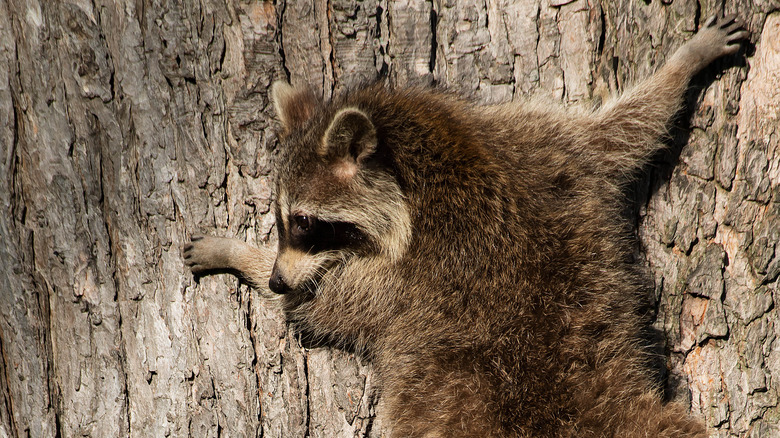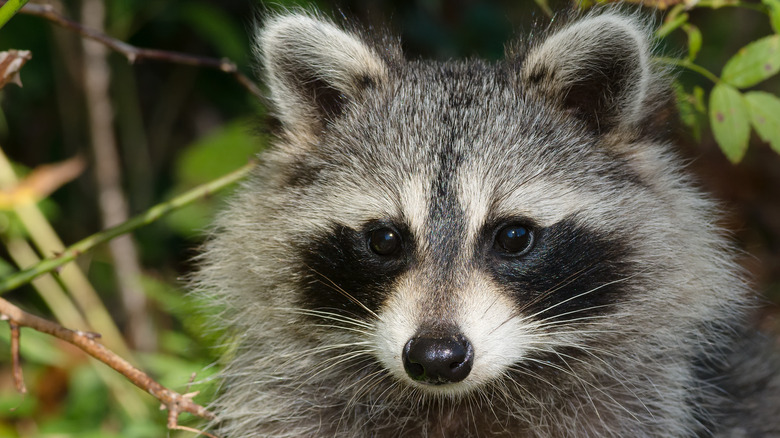The Rise And Fall Of Racoon Meat In The US
Of the many culinary traditions around the world, you're bound to find some that intimidate you. Individual cultures, cuisines, and people draw the line between what they consider food and don't differently. Vegans, vegetarians, and pescatarians draw that line, as do cultures that commonly consume crickets or raw eel. If you travel far enough into the past, you may find the same strangeness in your own cuisine's history.
According to Atlas Obscura, raccoon meat was a staple in American diets for much of its history. Detailed dietary records and recipes of the American indigenous peoples are not abundant. Still, the raccoon was a part of the diet of Native Americans, and the practice of eating it was shared with enslaved Africans throughout much of the southern U.S. It was often eaten out of necessity to supplement the paltry meals that slave plantations provided. The raccoons were often trapped and prepared using West African techniques, and soon the practice of eating raccoon meat was co-opted and became a staple throughout the American South.
Presidential Pardon
The demand for raccoon meat rose to such a degree that Mark Twain said it was one of his favorite American meals, according to Flavorwire. In November 1926, Mississippi resident Vinnie Joyce, unbidden, sent (New England native) President Calvin Coolidge a live raccoon as a gift to be eaten for Thanksgiving. But instead of stewing the raccoon, the Coolidge family named her Rebecca and kept her as a pet, per the Smithsonian Magazine.
It could be argued that the public adoption of Rebecca was the driving force behind the diminishing popularity of raccoon meat, but another factor is that it was also around this time that meat processing practices and technology made farm-raised proteins cheaper and more accessible. Although now it is rare, raccoon meat is still available if you just go to the right places and meet the right trappers. According to the Los Angeles Times, you only need the proper permit, some traps, a sharp knife, and a freezer.

